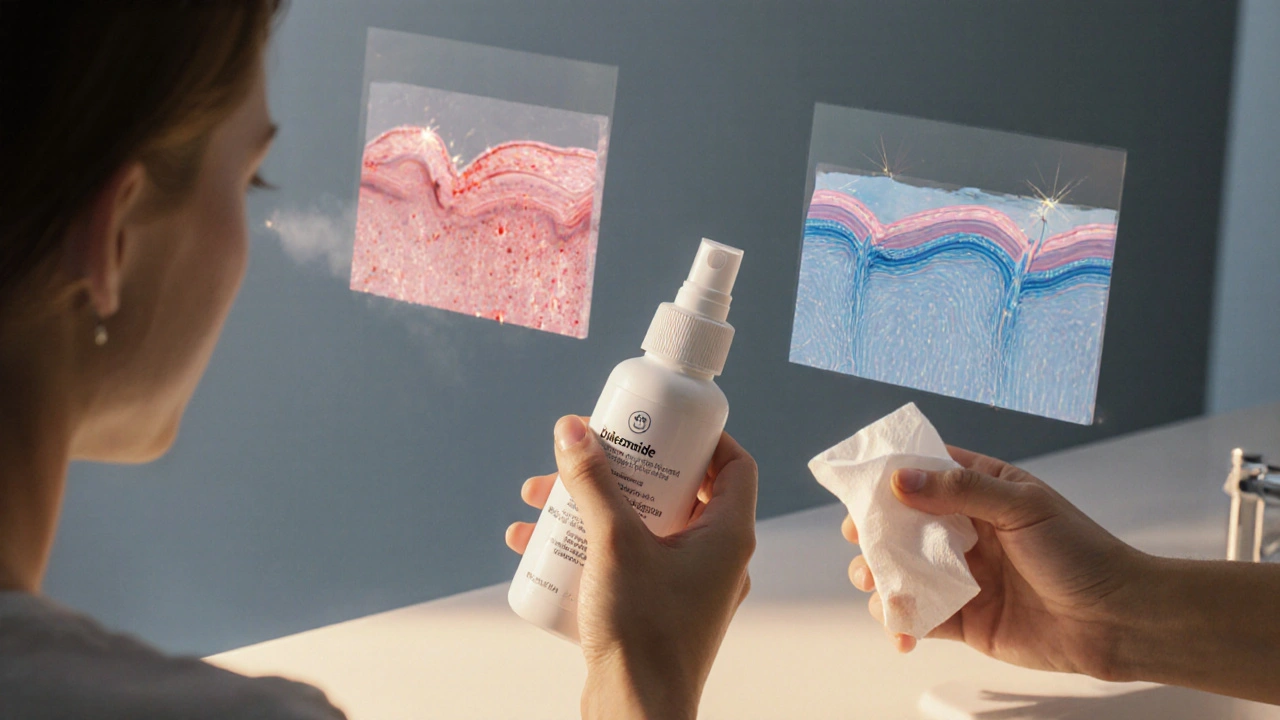Rhinocort – Uses, Dosage, Side Effects and Buying Tips
If you’re dealing with sneezing, a runny nose, or itchy eyes, you’ve probably heard of Rhinocort. It’s a nasal spray that contains budesonide, a steroid that reduces swelling inside the nose. Unlike a quick‑acting decongestant, Rhinocort works by calming the inflammation that causes allergy symptoms.
How Rhinocort Treats Nasal Allergies
When you spray Rhinocort, the medication coats the lining of your nasal passages. It blocks the chemicals that make blood vessels expand and produce mucus. Because it targets the root cause, you’ll notice less congestion and fewer post‑nasal drips after a few days of regular use. Most people start to feel relief within 3‑5 days, but the full benefit can take up to two weeks.
Rhinocort is meant for daily use, not just when you feel sick. Taking it consistently keeps the nasal tissue calm, so you don’t get the sudden flare‑ups that happen with seasonal allergies. If you stop using it, symptoms may return within a few days.
Tips for Using Rhinocort Safely and Effectively
Here’s a quick checklist to get the most out of Rhinocort:
- Dosage: Adults usually spray one or two sprays in each nostril once a day. Children 6‑12 years often use half that amount. Always follow your doctor’s instructions.
- How to spray: Blow your nose gently, tilt your head slightly forward, and insert the tip into one nostril. Close the other nostril with a finger, press the pump, and breathe in gently. Repeat on the other side.
- Start slow: If you’re new to steroid sprays, you might feel a mild stinging sensation. This usually fades after a few uses.
- Watch for side effects: Common issues are sore throat, nosebleeds, or a bad taste. If you notice severe nosebleeds, vision changes, or swelling of the face, call a doctor right away.
- Storage: Keep the bottle at room temperature, away from direct sunlight. If it looks cloudy or you can’t spray properly, replace it.
Rhinocort is available as a brand‑name spray and as a cheaper generic version called budesonide nasal spray. The active ingredient is the same, so you can save money by choosing the generic if your pharmacy carries it.
When buying online, make sure the pharmacy requires a valid prescription and has a physical address listed. Look for reviews that mention fast shipping and real‑medicine guarantees. Avoid sites that offer “no‑prescription” versions – they’re often counterfeit.
Finally, remember that Rhinocort isn’t a cure for allergies. Pair it with other steps like keeping windows closed during high pollen days, using air filters, and taking antihistamines if you need quick relief.
With the right routine, Rhinocort can keep your nasal passages clear and let you breathe easily all year round.
Rhinocort (Budesonide) vs Top Nasal Allergy Sprays: Detailed Comparison
A detailed side‑by‑side look at Rhinocort (budesonide) versus other nasal allergy sprays, covering efficacy, cost, dosing, and safety to help you pick the best option.
